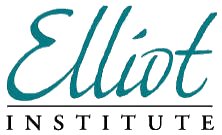Morality Is Like Art ...
Somewhere You Have to Draw a Line
- Where should we draw the line on efforts to alter human genes to create a "superhuman" race?
- Where should we draw the line between mixing
human and animal genes to create human-animal
hybrids?
- Where should we draw the line between treating humans as objects made up of tiny bags of chemicals (cells) rather than Beings with inherent worth and dignity because we are made in the image and likeness of God?
The Threat of Unregulated Human Engineering
and Human-Animal Crossbreeding
Modern
eugenicists and
transhumanists,
including many leading scientists,
want to use the tools of biotechnology to forever change
humankind. They want to change not just our
society, but our biology.
While they prefer to talk about the goal of ending disease, their ultimate goal is to create "better people." Using the science of genetics, they envision creating new human races, including homo superior.
In the reverse direction, some hope to create sub-human species by blending human and animal genes. These human-animal hybrids, they say, will be more easily trained to complete dangerous tasks or to serve homo superior in other ways.
Most transhumanists admit they have no idea where the process of human engineering will end. Most believe it will never end. Instead, human engineering will be a never ending process as different discoveries and ideas find their way into the reshaping of humanity.
However, most will also admit that—as with all new technologies—tragic mistakes will be made. But they are united in their insistence that progress requires trial and error. They oppose any laws that would restrict their experiments and efforts to reshape human life because they want to achieve their goal of creating a new humanity with a minimum of public debate.
Curiously, even while eugenicists and transhumanists oppose regulation of their human engineering experiments, they are very active in demanding public funding. In these fundraising efforts, they emphasize the promise of cures for common diseases. In fact, they see anything less than perfection as a disease.
For example, James Watson, who won the Nobel Prize for describing DNA structures, is only one of thousands of leading scientists who want to use genetic engineering to redesign humanity. Proclaiming stupidity a disease, Watson wants the freedom to design “better people” who lack the hypothetical "stupidity" gene.
Like the scientists rushing toward human cloning, many transhumanists and eugenicists, are simply loose cannons. They place all of their faith in the eventual triumph of their scientific methods. They have no respect for the public opinion of non-scientists. They have no belief in the inherent dignity of human beings. Instead, they want progress, and they believe the future evolution of humanity should not be left to chance or “imaginary gods.” Scientists and the biotech industry, they believe, should be left free to use their skills and resources to improve the human race in any way their technology may lead us.
The Need For a Preemptive Ban
We believe the future and safety of the human race demands a preemptive ban on "loose cannons" creating and modifying human beings without prior approval from the public through our governing authorities.
We are a coalition of concerned citizens and organizations who believe it is time to slow the train of "progress toward a new humanity" before it is too late.
We support local, national, and international efforts to erect preemptive bans on human engineering, with appropriate exceptions for cures involving gene therapies, stem cells, and similar procedures that treat disease without fundamentally changing human beings or the human genome.
Our proposals will allow scientists, including transhumanists, to conduct ethical experiments with animals. Once they have proven the effectiveness of their "genetic fixes" or "superhuman enhancements," they are encouraged to educate the public and legislatures about why their proven techniques should be conducted on humans. But without this prior public approval, it would be against the law for them to create human life and tamper with human beings.
We support progress. But we believe that everyone should have a say in determining if genetic procedures that change human beings are really progress...or are a step toward disaster.
Our First Initiative to Regulate Human Engineering
In March of 2006, we sponsored an
initiative to amend the
constitution of Missouri during the election of November
2006. The proposed new article to the constitution
would have erected a preemptive ban on human engineering, with
limited, commonsense exceptions. Most importantly,
it would have reserved to the people the right to make future
exceptions.
Our amendment was not put on the ballot due to our failure to begin this effort earlier. by the time the Secretary of State approved our petition initiative for gathering signatures, we had only five weeks remaining before the deadline. In consultation with other groups, a strategic decision was made not to pursue this amendment further in 2006. But we will pursue it in 2008, and are working to pursue variations on the same amendment/legislation in other states and countries.
This initiative will get the "loose cannons" in bioengineering under control. It will allow and encourage ethical experiments with animals. But before these technologies can be used on people, scientists must come to the voters to convince us that using these technologies on humans is wise and beneficial.
This is the first of similar initiatives we intend to sponsor in other states and in other nations. We invite you to explore our site to learn more about the dangers of unregulated transhumanism.
Please join our Coalition to help support and protect human dignity, the human species, and lifesaving research and cures in Missouri.



